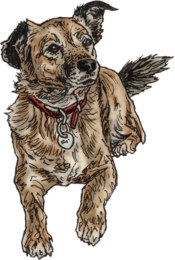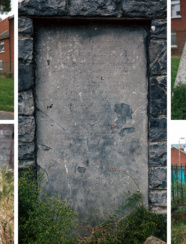

Goldenbridge Cemetery
Goldenbridge Cemetery
History
From the time of the Reformation Catholics were not permitted to have any cemeteries of their own and buried their dead in the grounds of old churchyards and monasteries or in Protestant Churchyards. Legally Protestant clergy were the only ones permitted to recite funeral prayers but over time there was a growing compromise to allow Catholics have a very brief time for prayers at the graveside. However, when William Magee, an evangelist and steadfast opponent of Catholic Emancipation, became Archbishop of Dublin, all compromise was abandoned.
One particular incident marked a turning point and the start of a huge change for Catholics. In St. Kevin’s Churchyard in September 1823 Dr. Michael Blake Catholic Archdeacon of the Dublin diocese was about to offer some quiet graveside prayers when a Protestant sexton, who many believed was working on the orders of Archbishop Magee, stopped him.
The funeral was that of Arthur D’Arcy a well-known and respected Dublin citizen whose brother would later become Lord Mayor. He had died suddenly in an accident and his funeral understandably attracted a large crowd. The incident, witnessed by many, propelled the issue onto the public stage. This was probably the intention of those who had made the intervention but it had unintended consequences for Archbishop Magee and his supporters.
The debate that followed naturally involved Daniel O’Connell who was at the height of his powers and with the Catholic Association was pushing for greater Catholic rights. In a signature move O’Connell forced the issue and became determined to establish a cemetery that would be open to those of all religions and none.
A committee was formed to carry out the far from simple process of setting up a cemetery and in 1828 they managed to secure this land at Goldenbridge for a fee of £600. The consecration ceremony for Goldenbridge took place on 15 October 1829 and the first burial soon after. The following years proved very successful for the cemetery and demand resulted in a sister cemetery being opened at Glasnevin. In the 1860s the War Office moved to try and close the cemetery claiming it initially to be a public health risk, which was dismissed, and then by arguing that funeral traffic was a disruption to the adjoining barracks. There was a huge outcry and it took two years before it was agreed that Goldenbridge would remain open to burials for those who already had plots but would close to new burials. Burials have continued at a slower rate since then and today Goldenbridge holds the graves of many historically important characters.
Goldenbridge Cemetery is operated by Dublin Cemeteries Trust
Goldenbridge Cemetery was reopened to the public in 2017 as part of the inaugural Culture Date with Dublin 8 festival programme.
Address
Goldenbridge Cemetery
St Vincent's Street
Inchicore
Dublin 8
Open daily
goldenbridge@dctrust.ie
www.dctrust.ie
Notable Graves
Goldenbridge Cemetery contains many historically significant and interesting graves within its walls.
Those whose last resting place it holds include:
Politician, revolutionary, 1st head of government of the Irish Free State and one of the most prominent political characters of 20th century Ireland.
Member of the Irish Volunteers who was killed in the fighting at the South Dublin Union and step-brother of W.T. Cosgrave
A veteran of the 1798 Rebellion in Kildare who later published an account of his experiences including his role in the surrender of the United Irishmen in the area.
An 8-year-old child killed during the 1916 Rising. One of forty children to lose their lives during the fighting.
A member of Cumann na mBan who served during the 1916 Rising, War of Independence and Civil War.
A doctor and rugby player who played for Ireland between 1892 and 1897. He was picked for the British Lions team that toured South Africa in 1896 and was later President of the IRFU.
A United Irishman and printer to the prominent revolutionary people and movements of the late 18th and early 19th Century; from Lord Edward Fitzgerald to the Young Irelanders
Passport
Collect your stamp for Goldenbridge Cemetery on your visit to Richmond Barracks as part of our Cultural Attractions Passport initiative.






